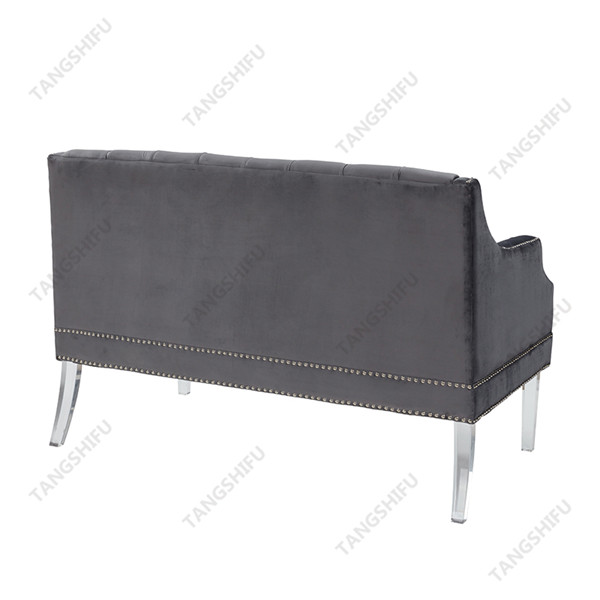The amount of financing in the pan-home industry has dropped sharply. On the one hand, it is related to the economic environment. The current "capital winter" in the primary market has not passed, and fund raising is becoming more and more difficult.
But the more important reason is that after trying various models, the pain points caused by the home furnishing industry's own characteristics have not been resolved for a long time, and investment institutions can't help being discouraged. In the past, investment institutions that frequently took part in the home improvement industry, such as Shunwei Capital, CDH Investment, Jingwei China, etc., dining room furniture manufacturers in china lacked high-return star projects, and they have become more and more in the past two years cautious.
Market scale
After communicating with many investors who are concerned about the home furnishing industry, the author concluded that the investor’s consensus is that the home furnishing industry is an important manifestation of the upgrading of household consumption in China and has a huge market scale.
What is worth looking forward to is that the home furnishing industry still has great potential and untapped space, living room furniture manufacturers in china Still paying attention to this industry. However, several major pain points are in the throat, not only hindering the development of the home furnishing industry, but also affecting investors' confidence in the industry.
Recently, the author visited him. He focuses on investment in the consumer and retail sectors, leading and participating in investment in star projects such as club factory, Shun Shun Study Abroad, Sandton and Vphoto. Although there have been fewer investments in the home furnishing industry in recent years, he is still full of confidence in the home furnishing industry.
During the exchange, several core pain points in the home furnishing industry were pointed out. Perhaps companies that can give priority to solving these pain points can disrupt the home furnishing industry.
New models
For consumer products, the mass consumption process consists of five links: defining the product-dissemination-consumer decision making-placing an order-re-feeding, and second dissemination. In this process, new technologies and new models can be used to make the connection between each link closer, or multiple links can be integrated in the same scenario, such an enterprise has greater commercial value.
For example, when consumers watch Douyin and Taobao live broadcasts, they directly click on the link to place an order. This scenario solves the three links of communication, consumer decision-making, and order placement. With this business model, dining room furniture manufacturers in china can provide consumers with better merchandise display scenarios and more efficient purchase scenarios, as well as shorten the production and sales path of enterprises and accelerate the return of funds.
But in the home furnishing industry, the sense of separation between these five consumer links is very strong. In the communication link, the usual method used by home furnishing companies is to advertise at airports and high-speed railway stations. In the terminal of Guangzhou Airport, almost all advertisements are contracted by various household building materials companies. This method only involves the communication link and has almost no connection with other links.

Connection efficiency
At present, there is almost no Internet-based business model in the home furnishing industry that can solve the connection efficiency between various links. Cloud design platforms such as Kujiale and Sanweijia can help companies display products and help consumers make decisions; content platforms such as Live Well and Yidoutang can play a role in planting grass and also help consumers make decisions; E-commerce platforms such as JD.com and Tmall can solve the order and transaction link; decoration websites such as Qijia.com and Tubatu can help installation companies to spread…
Whether it is home furnishings or home furnishings, it is a single-frequency consumption for consumers, and it is difficult for customers of a brand to buy again in the short term. Therefore, for companies, the growth of performance needs to acquire a larger number of new customers each year than the previous year, and the required market launch costs are increasing year by year.
The era when home furnishing companies rely on only one traffic portal to operate is over. If you want to repeatedly obtain new traffic, you need to integrate multiple traffic portals, which tests the organization and management capabilities of the company.
Major problem
However, due to the fragmentation of various consumer links in the home furnishing industry, dining room furniture manufacturers in china the launch of many channels cannot be converted into performance in the short term. How to balance the distribution relationship between various channels and find a source of traffic that can fission independently is also a major problem in the home furnishing industry.
Categories with strong repurchase and those with weak repurchase have very different dependence on channels. For categories with strong repurchase, old customers have a certain awareness of the brand. Even if the brand changes its sales channels, it will have some old customers as basic traffic.
However, home furnishings with a low repurchase rate need to continuously rely on channels to provide basic traffic. Once channels have "new favorites" and no longer serve as brand diversions, the brand will suffer a severe setback.
The lack of independent customer acquisition capabilities of home furnishing brands does not only occur online, but also offline, brand owners also need customer gathering scenarios. Therefore, the business model of home furnishing stores has great commercial value and competitiveness in China.
Although many home furnishing brands hope to build their own channels and master the ability to acquire customers independently, so far, we have not seen a business model that can solve this problem.
Fragmentation of the consumption process, low-frequency consumption, and high dependence on channels are unique pain points of the home furnishing industry. These pain points hinder the development of home furnishing enterprises.
